|
Q: What inspired this story? The greatest inspiration around this story is the knowledge and understanding that climate change is the greatest threat to human rights in the 21st century, causing the displacement of millions around the world, with climate-induced food insecurity fueling even more conflicts every day. Not only is our youngest generation among the most vulnerable, they will also bear the worst consequences. Over the past ten years, I, as the director, have taken a deep dive into the topic of climate change and its disproportionate impacts on young people, as well as learned about the legal frameworks of climate litigation. In 2011, I co-created a 10-part documentary short series featuring youth suing their state governments over climate change, which showed me the power of the youth voice, the importance of the judicial branch of government in the climate solution, and ultimately led to the documentation of YOUTH v GOV. In 2015, when Juliana vs. The United States was filed, I knew it was an opportunity to look at WHY young Americans have a constitutional right to a stable climate system and to reach a larger audience through a feature documentary. The entire team cannot imagine a more important story to tell at this point in history. We are heartbroken about the future we are leaving our children and children around the world and the challenges they will face as climate impacts intensify. We are inspired by the vision of these young people and thoroughly believe that their message and their landmark constitutional climate change lawsuit has the potential to change how we address the climate crisis. Q: Describe some of the challenges faced while making this film/program? When I set out to make this documentary, I had no idea how complex and challenging the story would become. Initially, I was drawn to the personal stories of the young plaintiffs featured in the film -- their bravery and perseverance to take their government to court to protect their rights to a stable climate, and the dedication and perseverance that they exhibited. However, I knew that the plaintiff’s stories alone were not enough; they had to be experienced in the context of the landmark and historic constitutional lawsuit they were a part of – Juliana vs. The United States. As the director, I spent years getting to know the plaintiffs and their families by traveling to their communities to understand what shaped these young people into the young leaders they were becoming while I was documenting their stories. Telling a compelling story of twenty-one characters and a legal team over four years following a very complex legal case with complicated terminology and court proceedings added to the challenge of writing this film. From the onset, we were committed to amplifying the youth voice by telling their stories. It would have been easier to focus the story on the lawsuit or adult experts, or to create yet another climate catastrophe film. Rather, what has inspired us is the hope and determination of these young people, and the innovative solution to the climate crisis that they are seeking. However, creating a compelling story around a complicated lawsuit is tricky. We had an overabundance of important information to share with the audience to provide an understanding of the critical case elements and the gravity of a potential court ruling, but we knew this could quickly become a scenario with a bunch of talking heads, leaving the audience emotionally removed from the story. Throughout the edit, we knew it would be imperative to highlight the intimate, verite moments with our characters – the heart of our story -- and to weave those moments together with the legal case elements and historical background to create a cohesive story. We sifted through hundreds of hours of archival footage, audio files, documents, climate and government reports, law, and photographs to weave together this very important piece of American history that is of utmost importance today. This footage supports the current day interviews showing what the government’s own scientists were saying about the dangers of greenhouse gases as the administrations continued locking the country into a fossil fuel-based energy economy through promoting, permitting, authorizing, and subsidizing fossil fuel extraction and consumption. Importantly, we took great care to present the facts in the film in a non-partisan way. During production, we also faced a myriad of challenges, such as scheduling shoots and crew around a court schedule that was completely unknown, court decisions that were unpredictable, and climate impacts that were sudden and travel-intensive. We had to be nimble as a crew to navigate these unknowns and to have a sense about what moments were crucial to capture. Q: What did you learn from your experience making this film/program? As a first-time feature director, I feel that my experience in making this film has been invaluable and all-encompassing, and the question would rather be, “What didn’t I learn from making this film?!” One of the most important things I learned was the value and necessity of building trust and confidence with a large cast of characters. To capture the vital story elements of this complex story, I needed to build strong relationships with the legal team, experts, youth plaintiffs, parents and family members. Additionally, there were unique challenges working with children and minors and needing the parents and families to be “on board” with the story and the commitments. This was critical to the success of the film. I now know more about government malfeasance when it comes to the climate crisis than I ever thought I wanted to. The research phase of the film was long and extensive, and I took a deep dive into, not just the actual content that we were researching, but also archival research, fair use, licensing, and proper logging and documentation for E&O insurance. I experienced the true value of working with a composer to create an original score for a feature film - a score that does not overshadow the story, yet provides the emotional cues and audio journey that is essential to the strength of the story. As a director, I realized that building a strong team is essential to the success of the film. Hiring the right editor(s) to collaborate with on bringing to life the story I had been envisioning for years was incredible. Having a strong producing team working with me on everything from research, fundraising, production, and post production allowed me the creative space I needed to focus on directing. I also learned that the right partnerships with co-production companies can make all the difference. It feels scary and unsettling to relinquish complete control over a project that has been your baby for a number of years, but the value added by the right partner (in our case Vulcan Productions) is what can make the completion of a film a true success. Q: How do you approach storytelling? Films that allow for character development by letting vérité scenes drive the story have been an inspiration and an aspiration for how I wanted to tackle “YOUTH v GOV.” For me, some aspirational films include “Mind The Gap,” “Life Animated,” “Knock Down The House,” and “The Cove.” Of course, there are narrative films with amazing through-lines of corruption told through a personal narrative, such as “All The President’s Men” and “Spotlight.” Using “Cutie and the Boxer” as a good example, we as an audience very quickly become immersed in the characters’ world and in their relationship. What starts out as a bio-pic about Ushio Shinohara becomes a love story with his wife Noriko that drives the story. I love the fact that her character, which was unassuming at the beginning, becomes such a central piece to the story and is critically essential. I thought about this a lot as I watched how my characters grew and developed over the course of four years of filming. Some of them were quiet and unassuming in the beginning, but truly became central pieces of the story. Although “YOUTH v GOV” is about a monumental, legal battle, it is more about the journey the young characters have been on as they take ownership over their constitutional rights and hold their government accountable. The films I connect with as a viewer are ones that take me behind the doors and into the lives of the characters, allowing for empathy and understanding and sometimes even frustration and consternation. It’s the stories of real people making the world go around that, for me, are the ones that need telling. Q: What impact do you hope this film/program will have? Throughout history, social justice movements have required visionaries and activists, and some of the most meaningful social changes have been sparked by the actions of young people. We are once again at a point in history when youth are rising up and demanding change, from gun reform to racial justice to climate justice. While young people around the world are taking to the streets and fighting for their rights, the youth plaintiffs featured in this film are fighting for their futures in our country’s highest courts. And we believe their story has the potential to change how we think about climate change and how we address this critical issue. Young people are visionaries; they’re not afraid of change. They are already embracing the technological advances that our country needs to make the transition to a fossil-free future. While today’s youth are utilizing social media and technology to drive movement on issues that they care about, we aim to encourage them also to be engaged in our democracy and to hold their elected officials accountable, including those who aren’t yet old enough to vote. We hope the film will help elevate their voices and encourage them to create needed changes. To date, most “climate” campaigns have focused on behavior change, but the YOUTH v GOV impact campaign makes clear that society cannot rely on this alone if we are to prevent the worst of the climate crisis. Judicial systems - in the United States and in other countries - exist to provide relief when actions by governments are harming their own citizens. As we see in the film, our government played a foundational role in creating the climate crisis. The story and the campaign provide a powerful opportunity to educate and activate audiences about their rights and what they can do to defend them, making connections between government responsibility, our constitutional rights, the role of the courts in the climate crisis, and the importance of citizen democracy. After many months of landscape analysis and consultation with climate movement experts, the goal of the campaign is to shine a spotlight on the U.S. government’s historical role in creating the climate crisis, and to provide young people with the inspiration to act and avenues and resources to hold their governments and elected officials accountable on the climate crisis. Q: Were there any surprising or meaningful moments/experiences you want to share? I think the entire crew would agree that the moments in the courtroom were unexpectedly compelling and riveting. Being physically present to feel the tension and excitement in the courtroom, and witnessing Julia Olson, the lead attorney, bring unbelievable mastery of storytelling, poise, and fact upon fact before the judges, was incredible. Equally incredible was witnessing the legal arguments of the Department of Justice attorneys, who while admitting that climate change is real and an urgent problem, also basically denied any responsibility by the government in a) creating the crisis and b) providing a solution. The day that the trial was scheduled to take place (and put on hold by the Supreme Court) in October 2019 was a devastating day for the plaintiffs and the legal team. There were a lot of emotions swirling, with tears, frustration, anger, and disappointment. It was amazing to see these young people come together as a “family” and find ways to support each other through that grief. They demonstrated their true strength and courage that day, showing up to a courthouse full of hundreds of supporters, and encouraging those people to continue supporting and providing them with inspiration and hope. Q: Any fun facts about the film/program, the subject matter or the production crew that might surprise the Audience? Our team was truly global and we are proud of the fact that we had figured out how to work remotely, through Zoom, well before the Covid pandemic ever started. It also comes as a surprise to most filmmakers we meet at other festivals that our team is not based out of major film meccas or cities. We have all figured out how to work from regions of the country that provide the quality of life that we are all seeking - Bozeman, MT; Boulder, CO; Salida, CO; Friday Harbor, WA; and New Zealand. Q: Anything else you would like people to know? As leaders in the youth climate movement, the twenty-one plaintiffs of Juliana v. The United States of America represent the diversity of American youth impacted by the climate crisis. They hail from 10 states: Florida, Alaska, Hawaii, Colorado, Oregon, Washington, Pennsylvania, Arizona, Louisiana, and New York. These film characters encompass cultural, economic and geographic diversity and many come from marginalized communities, serving as beacons of hope for those who do not have a platform to share their own stories. They are African-American, Indigenous, white, bi- racial, and LGBTQ, and their diversity speaks not only to the impacts of climate change, but to the inclusion required if we are to build a better and more just future together. These young people are activists, students, artists, musicians, and farmers, and their stories are universal. Q: What next? Since our film festival premiere at DocNYC in November 2020, we have screened at 28 film festivals across the United States, and have been programmed at another 15, at present count. We are very excited about some of the festivals that are tapping into marginalized communities on the frontlines of climate impacts. In September, we are bringing on an exciting, young, and diverse impact team (YEA! Impact - Young Entertainment Activists) to help run and manage our impact campaign, which will be focused on government accountability with the climate crisis. We are planning to launch our educational distribution this fall and also will be working with Good Docs and our impact team at YEA! Impact to organize community screenings. We do not yet have commercial distribution, but are eager to find a home for this film, where folks around the world will be able to view this compelling story and be inspired to take action. Q: What were some of the specific editing challenges you had to address? Editing YOUTH v GOV was a strong collaborative effort between me, as the director, and our wonderful editors Lyman Smith and Tony Hale. To launch the edit, we came together as a teen for a month at the Jacob Burns Film Center as part of my filmmaking residency. Both editors were selected because of their skill in complex storylines, as well as their ability to let each character’s authenticity come to the forefront to create a compelling story. Tony had an incredible knack for digging into an enormous volume of the individual plaintiff’s stories (the main characters) and finding their throughlines, while masterfully bringing emotion, humor, genuineness, and context to the screen. His editing beautifully told the story of who these characters were, what their lives at home were like, and why they each were in this fight for climate justice. Lyman had the daunting task of weaving together a very complex legal case, with a plethora of legal terms, procedures, and courtroom moments, with a wealth of historical evidence that added credence to the legal claims and what the youth stories were depicting. In addition to the court case and the plaintiff stories, it became clear that I needed to tell the historical piece of the story for the audience to understand the case. This became the biggest challenge throughout the project – how do I weave together three very distinct story lines into one coherent story? I knew that each of these pieces played a role and were equally important parts of the story, but for a long time it felt like I was writing three different films. The historical story is told from an investigative journalistic perspective. Together with my co-producer, Liz Smith, we spent two years researching government and news video and audio archives, interviewing subjects, pouring over documents and testimonies, and compiling a long list of actions taken by the government that I was able to weave into a narrative of the lawsuit and evolving character stories. We relied very heavily on graphic animation to depict the historical evidence, along with recollections and interviews from experts, former government employees and scientists, and whistleblowers. In order to address the challenge of the overall narrative, together with my editors, we came up with a strategy of telling the story in a three-act structure that paralleled the three elements of standing in a constitutional lawsuit - proving the plaintiff has been harmed, proving the defendant has caused the harm, and proving the courts can provide the remedy. This framework allowed for us to sew the various pieces of the complicated story together in a way that was always in service of moving the case forward. I had a clear vision of the film I wanted to make, giving equal weight to the personal stories, legal case, and historical evidence, all of which were vital to telling the story of the Juliana vs. The United States case accurately. Both editors worked very closely with me to bring the story I had been developing and shooting for four years to fruition. The artistry that both Tony and Lyman brought to the project helped to create an emotional, visually appealing, and cohesive story which, despite its complexity, is poised to move the hearts of viewers. Q: What do you feel is most important to remember when conveying information via film? We know that audience attention span can be limited. In fact, studies have shown that we humans have an average attention span that’s less than a goldfish (8.25 seconds), so we knew that the complex legal terms that we wanted the audience to understand would have to be visually appealing. By using graphic animations, we were able to relay details about the lawsuit that might be difficult for an audience to follow and make the information more easily digestible. Through the use of graphic animations, we were able to relay the complicated elements of this case – the three elements of “standing” in a lawsuit; standing declarations; and climate recovery plans. Also, the graphic animations were a vital tool in laying out the intricate history of the government’s actions in the climate crisis including reports, news articles, archival footage, and audio recordings. Obviously we had high ambitions and expectations of our audience with the content of YOUTH v GOV. As the director, I wanted the viewers to come away with a better understanding of how our government works, that our judicial system is essential, and it is imperative that we are civically engaged. But I knew the heart of the film still needed to be the human connection. The plaintiffs and their stories were the sugar needed in order to serve up the dose of medicine.
0 Comments
Filmmaker Q+A with Director & Producer, John Davies Q: Tell us a bit about the production Stories of You & I was filmed over one and a half months all over the UK, living out of the back of a van with a camera, swimming with basking sharks in the freezing waters off the Scottish Hebrides, spending evenings in forest hides, washing in lochs, climbing mountains in Wales and getting eaten alive by midges day in, day out. It was an experience I’ll never forget, living, filming and being immersed in na- ture so closely. The joy and freedom that gave me was a true saviour having spent the previous few months in lockdown. I hope this love of being amongst nature and living the experience while filming comes across to audiences and helps to bring a unique authenticity to the viewing experience. Q: What inspired the story? I first started developing this film sat in a field during the first UK lockdown back in March 2020 from a place of confused emotions. From love to grief, helplessness and hope, they seemed to mirror many feelings towards the current state of the world that were being felt by millions of others. At this time I was reading a lot and one of the books I was constantly dipping in and out of was ‘Letters to the Earth’ - a collection letters addressing the Earth, which had a big inspiration for the film conceptually. After reaching out to the co-creator of the book and campaign to firstly thank her for providing a source of inspiration during a tough time, I also ended up quoting parts of 3 letters featured in the book in the final film alongside my own ‘letters’. My hope and intention in making this film was to bring a sense of personal and emotional connection to environmental programming that would make under- standing the climate crisis more attainable for everyone and not just something that is distant, foreign and separate from our day to day lives. It was a different experience for me in the development process compared to my past projects. Rather than something purely observational, the pandemic pushed me to put a lot of myself, my own feelings and memories into the film. I wrote much of the voice-over based on my experiences growing up amongst nature collaboratively with one of my oldest friends, Dave Wood, who I’ve been an idiot with since we were 13 and shared many of these memories with. It was one of the first times we’ve had to be serious together but in the heart of the first U.K. lockdown it was a way to chat and be creative with a friend who lived over seas. We sent lines back and forth for months between London and Copenhagen (where he now lives), to end up with the final pieces that lead the voice-over... a proper covid collaboration. Q: Any fun facts about the film/program, the subject matter or the production crew that might surprise the audience? Many people have asked how we managed to get someone of the calibre of Jonathan Pryce onboard a tiny budget student film, and assume it may have been a personal connection. The reality was that in the early stages of filming while I was still refining the script I had been watching Youtube videos of people reading Dylan Thomas’ poetry for references and inspiration. I found a beautiful reading that Jonathan had recorded of ‘Do Not Go Gentle Into That Good Night’ and it deeply moved me. His voice resonated with me as I continued refining the script and would often picture his voice reading certain parts. I did some research into his background and realised in the previous year he had signed an open letter of celebrity backers, supporting a big environmental group, so knew he had a personal connection to the subject matter. While I knew it was a long shot, I thought ‘Why not?’ and sent him a personal letter explaining why I thought he’d be perfect for it along with the initial treatment and script, but honestly assumed I wouldn’t hear back or he would be too busy. To my amazement I got a response from his agent about 2 weeks into filming saying he loved the script and would like to be involved. That re- ally put on the pressure to get every shot to perfection and put in the extra hours in the field! In the take of his monologue to-camera that we ended up using in the final film, you could have heard a pin drop in the studio. I forgot entirely about the monitor and was just watching him and every word he spoke with a lump in the back of my throat...before we cut I looked across and a couple of the other production crew on set had tears running down their cheeks in silence and I knew we had the one. It was a real honour and privilege getting to work with him on this and an experience as a young Director that I will certainly never forget. Q: What impact do you hope this film/program will have?
As we finish it, it seems important to highlight the context and why I felt it was important for me to move from making observational documentaries to something far more personal with this film. At the end of this year, in Nov 2021, the UN Climate Change Conference (COP26) is being held in Glasgow, and it’s arguably the most important meeting in the history of mankind. World leaders will meet to discuss how we can accelerate action to tackle this monumental crisis that won’t just be affecting polar bears and penguins, it will be us, our children and our grandchildren. This year and the run up to this event is of vital significance to the future of our planet and frankly, to humanity itself. We must spread hope, truth and challenge our leaders to make a change for a sustainable, liveable future. I hope this film will allow people to reconnect with their own memories and love for nature to instil and drive positive change. Filmmaker Q+A with Geoff Luck, SVP Creative & Production of Wild Elements Studios Q: What inspired this story? Geoff: When we first spoke to Sheila Funnell about highlighting her work at Grevy’s Zebra Trust, she immediately started telling us about the work of others: these were the women who compiled the data that saved the zebra’s breeding grounds; here were the ones who supported girls in the communities as they raised awareness of the animals’ plight; and these others were replanting the degraded grasslands that are so crucial for both the zebras and the livestock the communities rely on. It was never about her. So we sought a way to weave their stories together in a way that spoke to the central message Sheila emphasized in our conversations: that women were changing conservation in a way that can benefit us all. Q: What impact do you hope this film/program will have? Geoff: There has long been a notion in conservation that people can be the primary threat to the survival of wild animals—that to make wildlife safe, we must expel all human presence from wilderness areas, and keep the two apart. But that perspective overlooks the fact that people have been part of natural systems for millennia, and that those who live alongside wildlife have often found ways to live that allow both to thrive. With this film, we hope to help reframe the dialogue to show the power that community-led initiatives can have in fostering coexistence. Q: Were there any surprising or meaningful moments/experiences you want to share?
Geoff: Throughout production, we were struck time and again by the impact the women we were filming were having in their communities—and how their work was in turn changing their status there. Sentiwan’s story, told in brief in the film, was one of many. After starting her work sewing sanitary pads, where she sometimes met foreigners (and film crews), she became known as “one who sees far”: an individual who brings valuable perspective to the village. When COVID struck, she not only became a conduit for reliable information, but a source of protection when she and the other women in the group began sewing facemasks in addition to pads. When we were there, they had made and distributed over 3000 masks throughout the region. We reached out to our 2021 Jackson Wild Media Awards filmmakers to ask them questions about the experience of making their films. Q: What inspired this story? Hedvika: As a filmmaker and photographer I have always been drawn to conservation and environmental stories. During my studies I have worked as a barista and developed a passion towards coffee. When it came to creating a final project for my degree, I wanted to make a film that would be very close to my heart. When I stumbled upon an article about coffee production being highly affected by climate change, I didn't hesitate and knew that was the story I wanted to tell. For me this story was an opportunity to not only explore a subject very close to me, but also to hopefully make an impact on the viewer and inspire change in daily habits. Q: How do you approach storytelling? Hedvika: The idea was to hook in the viewer with the thought of their daily cup of coffee being in jeopardy but to eventually make them see beyond that and realize how massive this problem is. It's not just that we might not be able to have a good coffee in the future, it is millions of livelihoods that are at stake because they depend on this crop. However, It's Bean Too Hot is a story of hope. Throughout the film we follow the characters as they work hard to adapt different solutions to protect their livelihoods. From a fully carbon-neutral farm to shade grown coffee and the role of women in farming, we discover some of the answers to successful coffee farming. The main idea of this story is that it's told by the people on which climate change has the highest impact. Characters from developing countries who struggle with the effects of climate change every day. Throughout the film we meet several characters from Costa Rica and Tanzania, each with their own struggles and ways of adapting to climate change. For the most part, the interviews were conducted in the characters' native language - Spanish and Swahili and I have also opted out of dubbing to keep the characters as raw as possible and make the viewer see things from their point of view. Q: What impact do you hope this film/program will have? Hedvika: I have always hoped for this film to have a wide audience. It doesn't reach only people interested in environmental films but everyone who drinks coffee. I wanted to draw the viewer in with the thought of their daily cup of coffee in jeopardy but when watching the film to make them see all that is connected to it e.g. livelihoods of farmers and biodiversity. I am hoping that after watching the film everyone will think about what coffee they're drinking every morning, what goes into the process of making it and hopefully, switch towards brands whose coffee is protecting the environment and farmers who grow it. |
Archives
March 2024
Categories
All
|
Contact UsJackson Wild
240 S. Glenwood, Suite 102 PO Box 3940 Jackson, WY 83001 307-200-3286 info@jacksonwild.org |

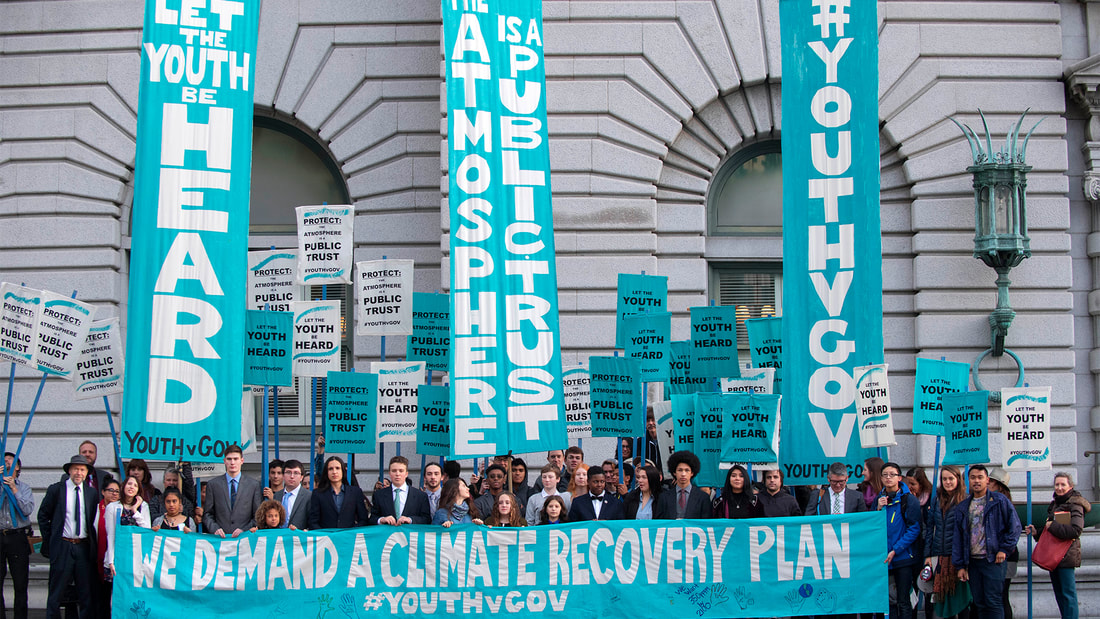
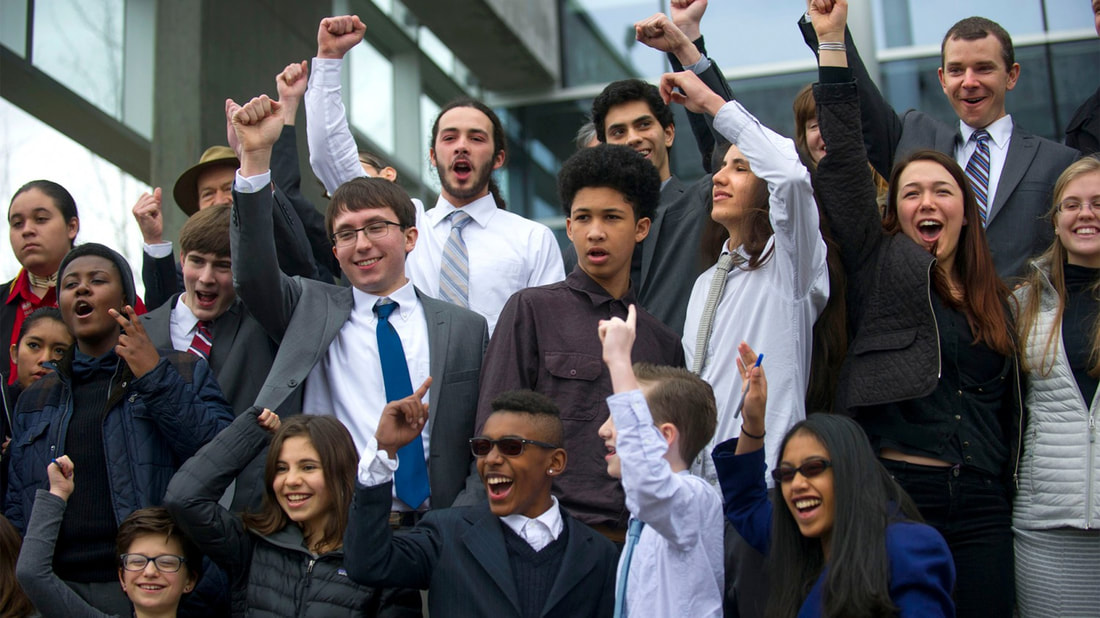
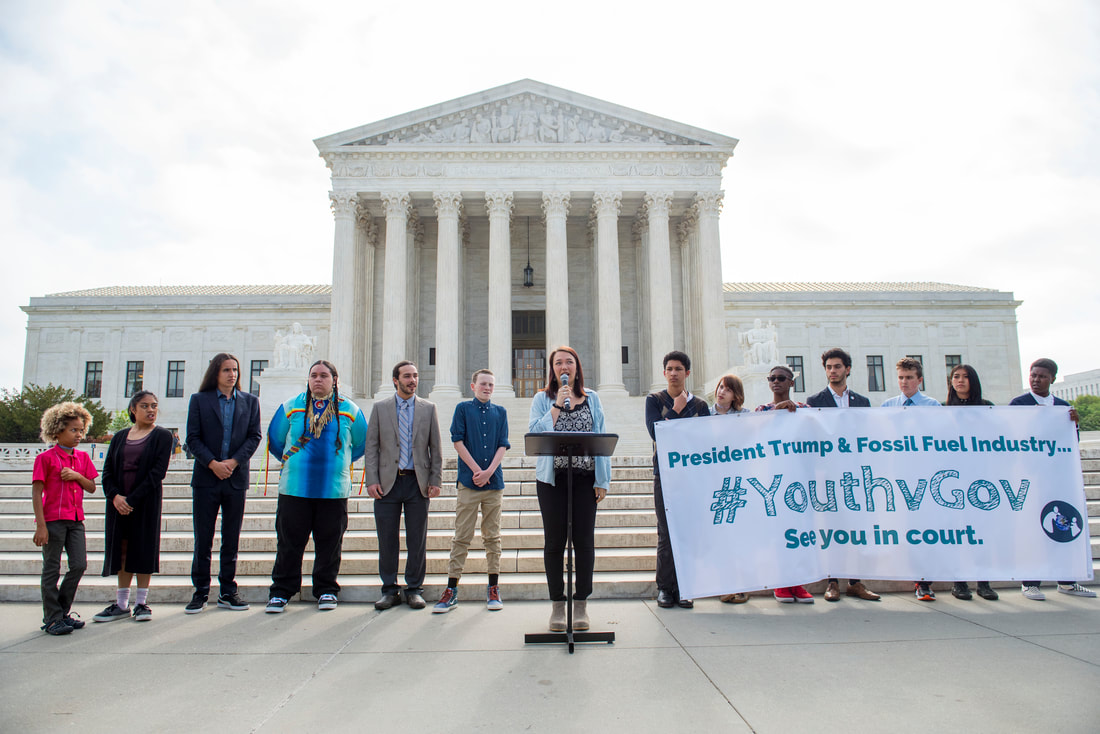



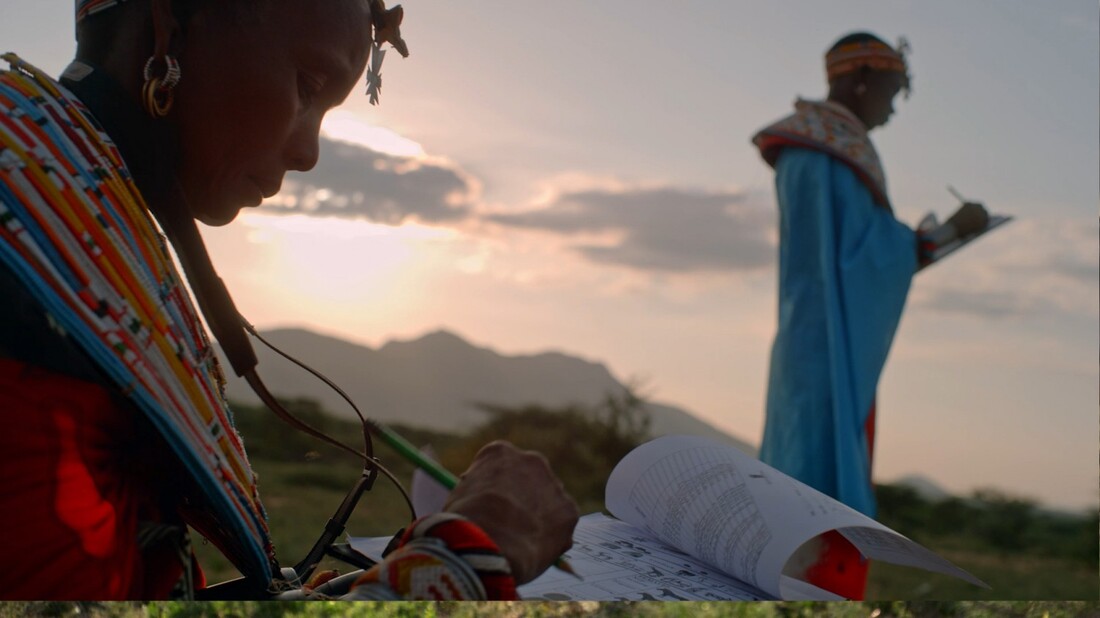
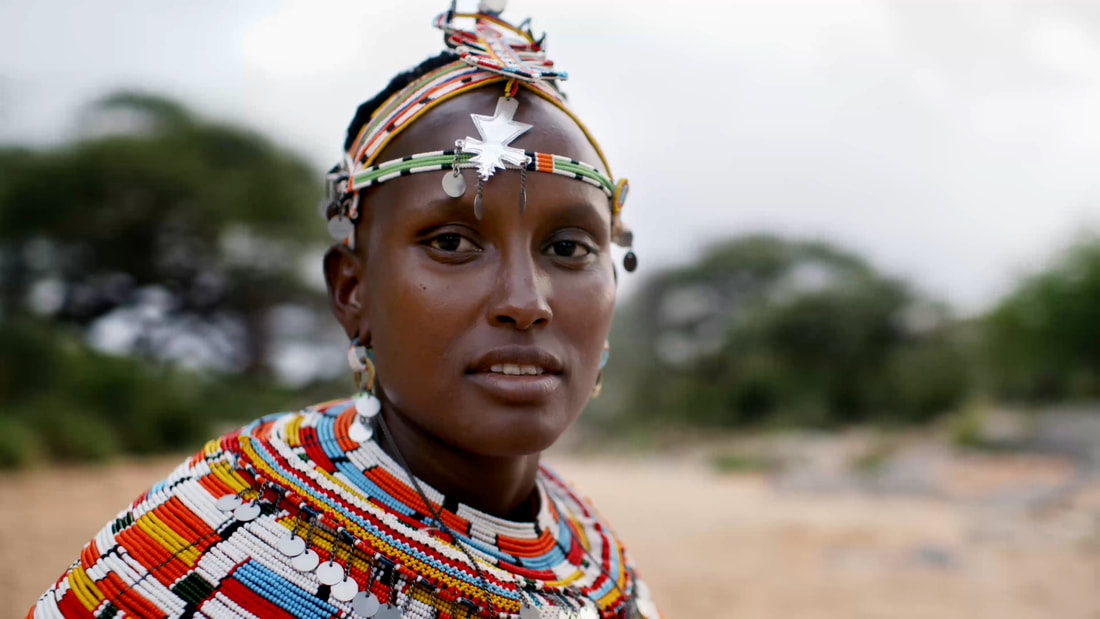
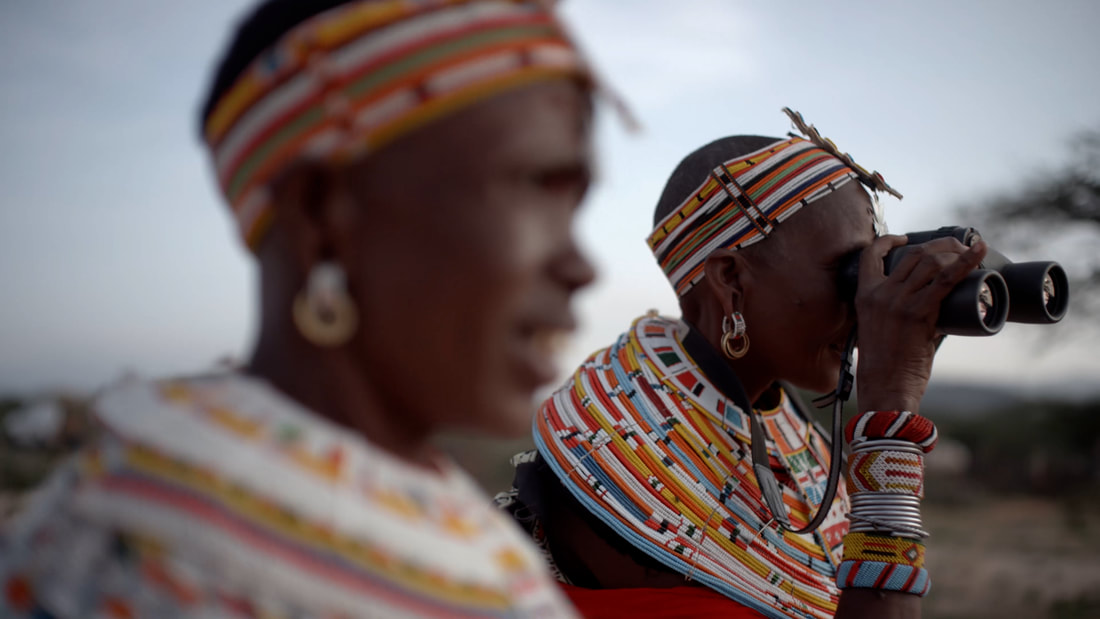
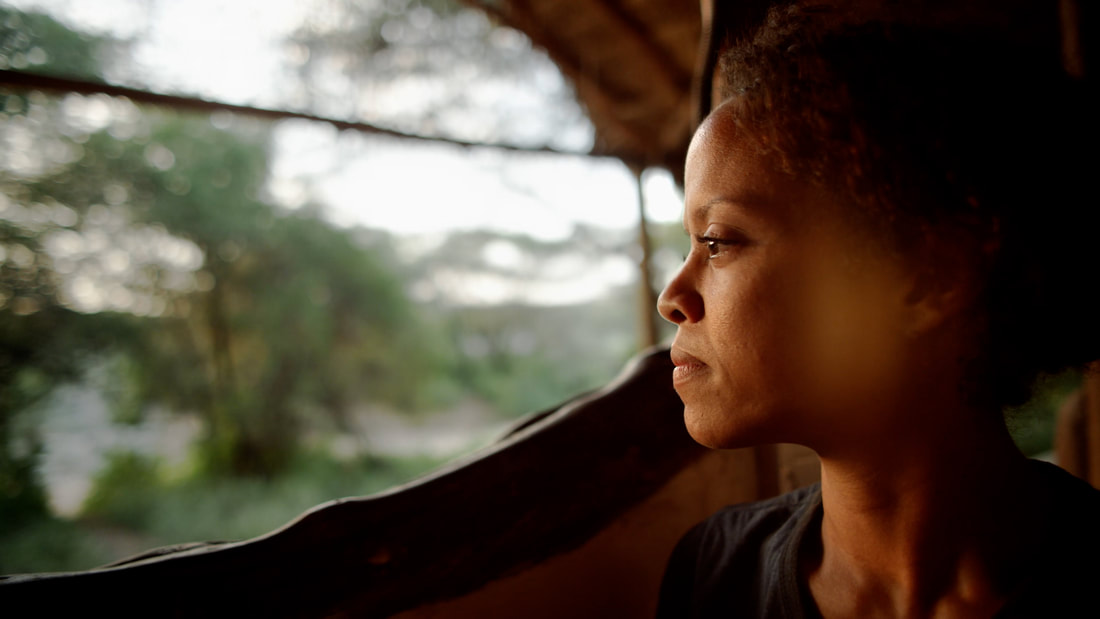
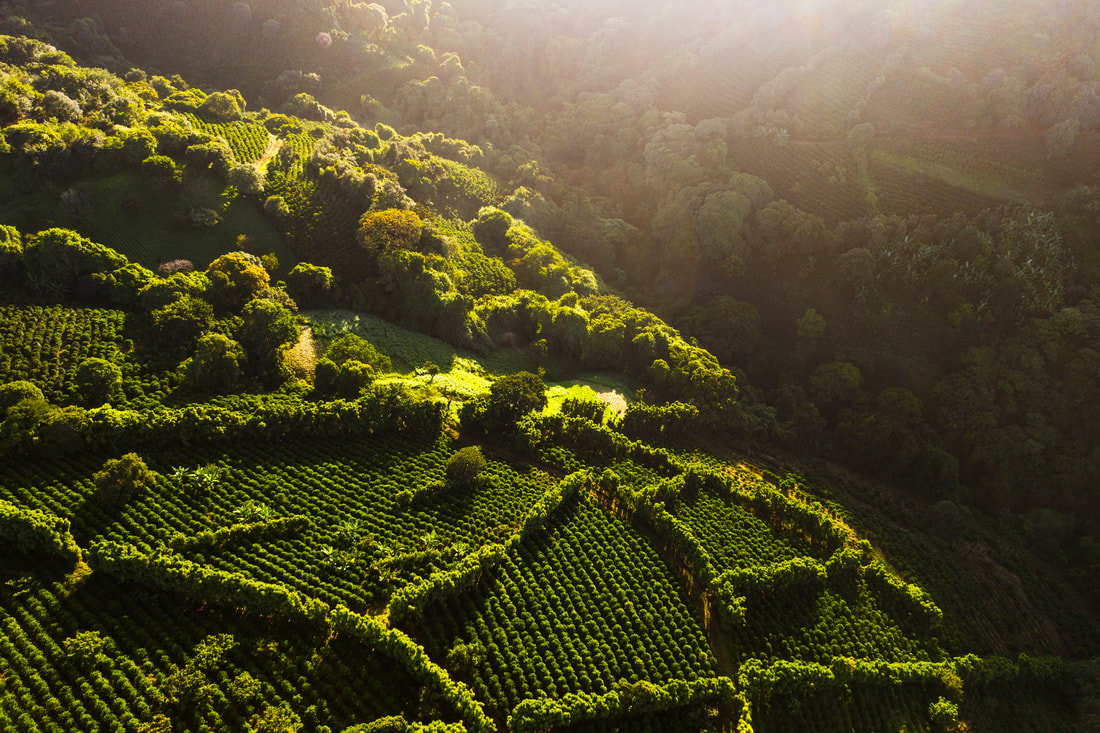
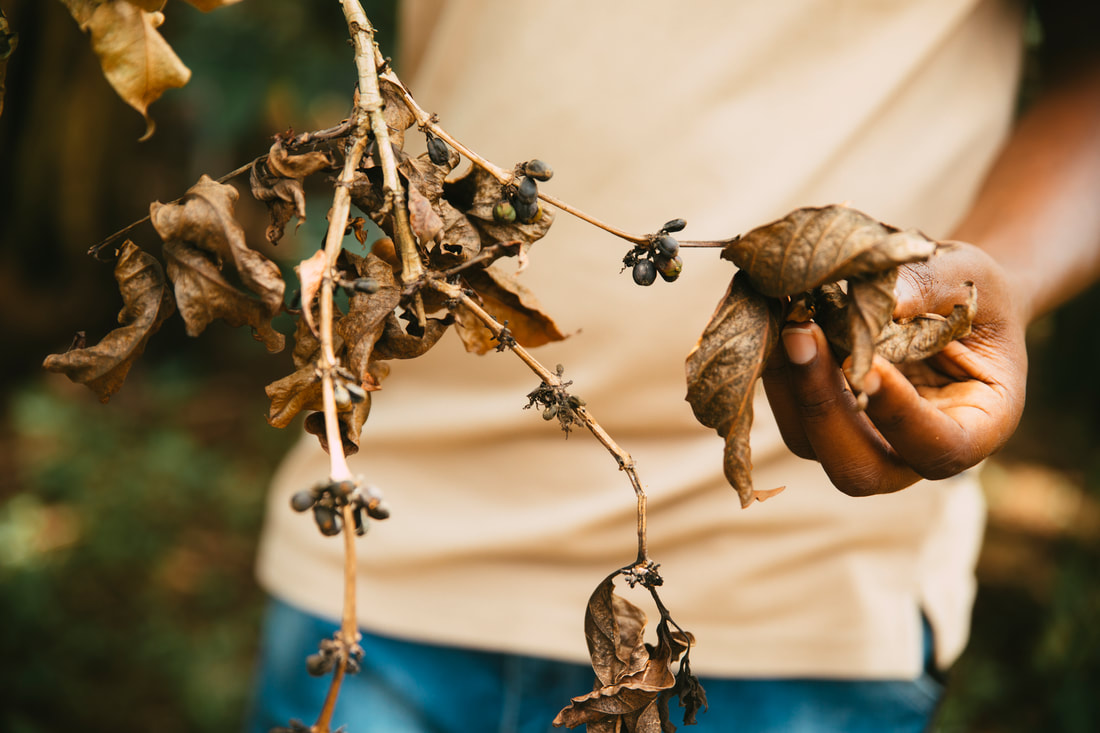
 RSS Feed
RSS Feed